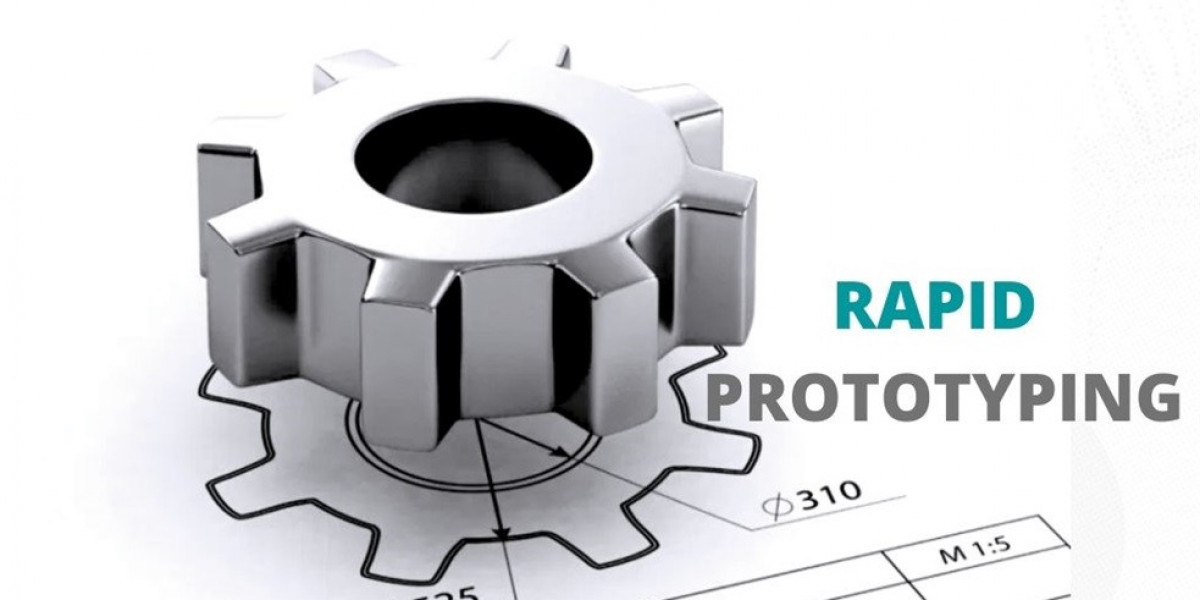In today’s fast-paced manufacturing environment, time-to-market can make or break a product’s success. Whether it’s consumer electronics, aerospace parts, or automotive components, companies need efficient and accurate methods to test designs before full-scale production. That’s where rapid CNC prototyping comes into play. By combining the power of computer numerical control (CNC) machining with prototyping techniques, manufacturers gain the ability to create high-quality prototypes with speed, precision, and cost-efficiency.
This article explores how rapid CNC prototyping revolutionizes product development, the industries that rely on it, its key advantages, and how it compares to other rapid prototyping methods.
What Is Rapid CNC Prototyping?
Rapid CNC prototyping is the process of using CNC machining technologies to quickly fabricate functional prototypes from digital designs. Unlike traditional methods that may involve manual machining or slow casting techniques, CNC machines automate the process using computer-guided cutting tools to sculpt parts from solid material blocks.
By uploading a 3D CAD file, manufacturers can produce accurate, repeatable prototypes in a matter of hours or days. This eliminates long lead times, reduces human error, and allows design teams to test, modify, and validate concepts faster than ever before.
Why Is CNC Prototyping So Effective?
1. Exceptional Accuracy
CNC machines can hold tight tolerances within ±0.01 mm or better, depending on the setup. This level of precision is essential for functional testing, especially when parts must interact with other mechanical systems. Rapid prototyping with CNC ensures that fit, form, and function can all be validated in a single iteration.
2. Wide Material Compatibility
One of the main advantages of CNC prototyping over methods like 3D printing is its ability to work with production-grade materials. CNC machining supports:
Aluminum, steel, titanium
Plastics like ABS, Delrin, and PEEK
Engineering composites
This enables realistic testing under real-world conditions, including load-bearing, thermal exposure, and chemical interaction.
3. Quick Turnaround Time
Because CNC machining is a subtractive manufacturing process, it can begin immediately after programming. Unlike injection molding or die casting, which require tooling or mold fabrication, CNC doesn’t need extensive setup for prototype runs. This makes it ideal for:
Iterative design cycles
Early-stage testing
Market sampling
Bridge production
Applications of Rapid CNC Prototyping
Product Development
Startups and R&D departments use CNC prototypes to test their designs before committing to full-scale production. Prototypes can be examined for ergonomics, strength, and assembly compatibility. This helps eliminate design flaws early, saving significant time and money.
Medical Devices
CNC machining is critical in the medical field, where prototyping must meet strict regulatory standards. Whether it’s a surgical tool or implantable device, CNC allows manufacturers to test both functional and biocompatible models quickly and accurately.
Aerospace and Defense
In aerospace applications, prototypes must be highly reliable, lightweight, and precise. CNC prototyping allows engineers to validate flight-critical parts under real-world stress and environmental conditions before moving to expensive tooling or certification.
Automotive Engineering
From brackets to housings and engine components, automotive companies rely on CNC prototyping to fine-tune part performance. This is particularly useful during crash testing or when validating heat dissipation and mechanical loads.
Electronics Enclosures
Prototyping enclosures for electronics involves ensuring component fit and thermal ventilation. CNC machining enables fast, custom housing fabrication using both plastics and metals, ideal for low-volume testing or pilot runs.
Advantages Over Other Prototyping Methods
CNC vs. 3D Printing
While 3D printing offers flexibility and is cost-effective for very early-stage designs, it lacks the material strength and precision of CNC prototyping. CNC parts can be used for real-world functional testing, while 3D printed parts are often best suited for concept modeling.
| Feature | CNC Machining | 3D Printing |
|---|---|---|
| Tolerance | High (±0.01 mm) | Moderate (±0.1 mm) |
| Material Strength | High (production-grade) | Lower |
| Surface Finish | Excellent | Often requires post-processing |
| Speed (low volumes) | Fast | Fast |
| Cost (one-off parts) | Moderate | Lower |
CNC vs. Injection Molding
Injection molding is ideal for high-volume production but is impractical for prototypes due to the time and cost of mold creation. CNC prototyping fills this gap by allowing low-volume production without tooling.
The Rapid Prototyping Workflow with CNC
Design and Modeling
Engineers create a 3D CAD model of the prototype, which includes all the geometrical features to be machined.CNC Programming
The model is converted into a CNC-compatible file format (e.g., G-code) using CAM software. Tool paths are generated based on the geometry, cutting tools, and material.Material Selection
Depending on the functional requirements, a suitable material is selected—whether it’s aluminum for lightweight parts or PEEK for medical components.Machining Process
The CNC machine executes the programmed tool paths to cut, mill, drill, or turn the part with high precision.Post-Processing
Finishing operations may include deburring, anodizing, polishing, or coating to achieve the desired surface quality.Testing and Feedback
The prototype is evaluated for fit, function, and performance. Design revisions can be made quickly, and the process repeated as needed.
Scalability and Bridge Production
In addition to one-off prototypes, CNC prototyping is also suitable for bridge production—producing a small batch of parts before full production tooling is completed. This helps businesses:
Deliver samples to customers or investors
Meet early demand before scaling
Test manufacturing workflows
Bridge production ensures that time is not lost while waiting for molds or automated systems, giving companies a competitive edge.
Key Considerations When Choosing a CNC Prototyping Partner
Material Expertise: Your partner should be capable of machining metals, plastics, and composites.
Speed: Lead times should match your development pace.
Precision: Tolerances must meet your industry standards.
Confidentiality: Intellectual property protection is essential during prototype development.
Post-Processing Capabilities: Surface finish, coating, or marking may be important depending on application.
Conclusion
In a world where innovation cycles are getting shorter and product complexity is increasing, rapid CNC prototyping is proving indispensable. Its ability to produce high-precision, functional prototypes in production-grade materials—quickly and reliably—gives engineers and product developers a significant advantage. Whether you're creating a new device, testing for compliance, or launching a pilot product line, CNC-based rapid prototyping bridges the gap between concept and market with unmatched efficiency.
By embracing this technology, manufacturers not only save time and reduce cost but also improve product quality through early validation and iterative refinement.







